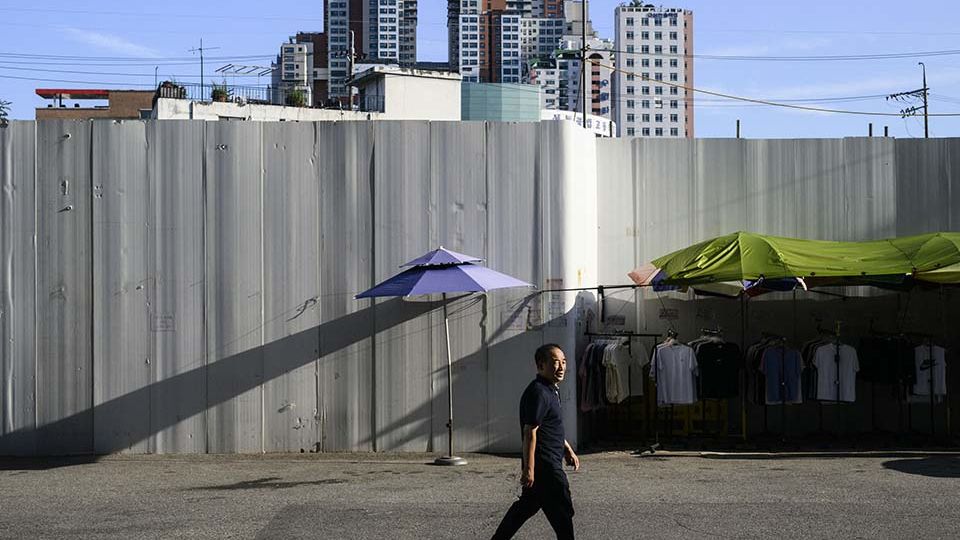May 23, 2025
SEOUL – Last year, Seoul recorded 48 tropical nights – the longest in its history – with daytime temperatures reaching 20 degrees Celsius even in November.
While rising temperatures are a worldwide phenomenon due to global warming, within South Korea, Seoul is warming at an even faster pace. The heat island effect is amplifying this trend, according to data and predictions by the government and meteorologists.
Seoul’s rapid warming
Meteorologist Kim Hae-dong, a professor in the Department of Global Environment at Keimyung University, predicts that this summer will be as hot as last year, based on climate forecasts from Korean and Japanese meteorological agencies and the World Meteorological Organization.
He attributes the intensifying heat to the growing influence of the Tibetan High, a massive high-pressure system over East Asia. This marks a shift from Korea’s traditional summer climate, which was primarily influenced by the North Pacific High.
“Due to global warming, snow-covered areas in Tibet have been shrinking, leading to rising temperatures within the Tibetan High,” he explained. “Additionally, reduced snowfall in China’s inland regions has resulted in drier soil and higher land temperatures. As a result, heated air rises and is then transported toward South Korea, intensifying summer heat waves.”
While the nation’s temperature will continue to rise, meteorologists, including Kim, and the government predicted that the capital city’s temperature rise will be faster than other cities despite its northern latitude.
Seoul — now home to about 20 percent of Korea’s population — has seen a rapid temperature increase over the past century.
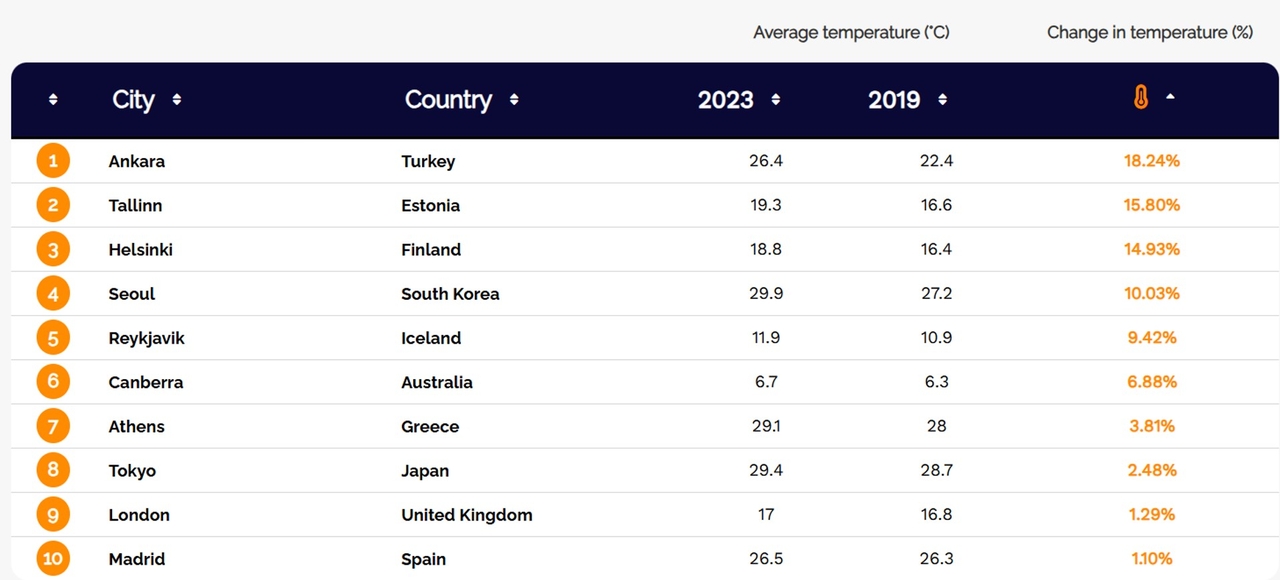
Utility Bidder, a UK-based energy consulting firm. CHART: UTILITY/BIDDER/THE KOREA HERALD
Average temperatures in several major cities across OECD countries have increased by more than 10 percent between 2013 and 2019, according to Utility Bidder, a UK-based energy consulting firm. Among the 28 countries analyzed, Seoul ranked fourth, with an average temperature rise of 10.03 percent, following Ankara (18.24 percent), Tallinn (15.8 percent) and Helsinki (14.93 percent).
Seoul’s average temperature rose from 10.4 degrees Celsius in 1908 to 14.9 degrees Celsius in 2024, according to the data from the Korea Meteorological Administration.
When compared with other five regions that have comparable, early-year data, Seoul and Daegu showed the largest increases, warming by 1.9 and 2 degrees Celsius, respectively, between 1912 and 2020, according to the KMA’s 2021 report “109 Years of Climate Change Analysis.” The latter is located in a basin surrounded by mountain. Other regions experienced smaller increases: Gangneung by 1.6 degrees, Incheon by 1.7 degrees, Busan by 1.5 degrees and Mokpo by 0.8 degree.
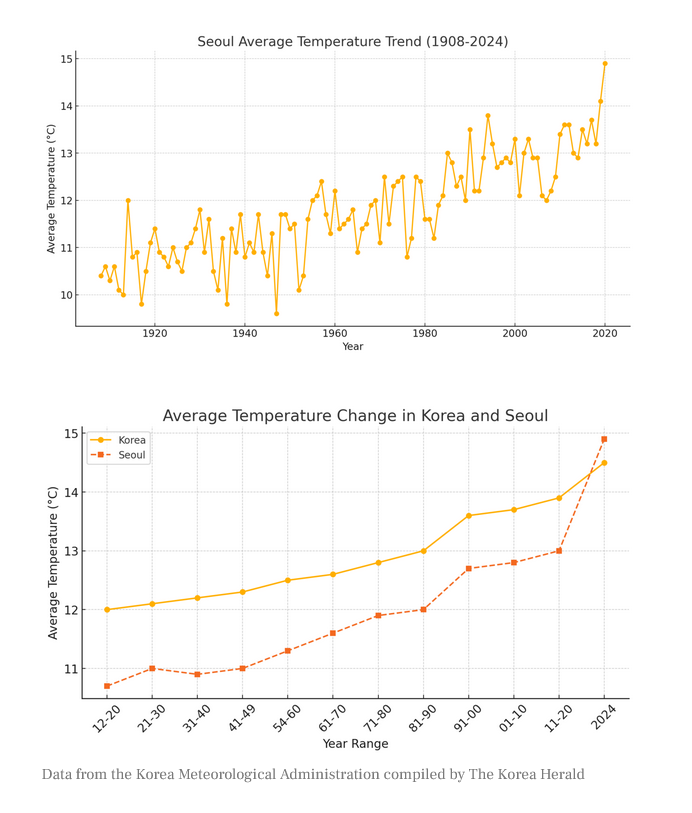
DATA FROM THE KOREA METEOROLOGICAL ASSOCIATION COMPILED BY THE KOREA HERALD
Meteorologists attribute Seoul’s rapid warming largely to its urbanization.
Urbanization alone accounted for 30 to 45 percent of Korea’s temperature increase between 1973 and 2014, with the rest attributed to global warming, according to Choi Young-eun, a meteorologist and professor of geography at Konkuk University. In Europe, urbanization’s contribution to temperature rise has been estimated at just around five percent.
Key factors driving the urban heat island effect include surface reflectivity, impervious surfaces, green space availability, building height and artificial heat emissions.
Choi compared Seoul and Yangpyeong — a less urbanized town east of Gyeonggi Province – between 1981 and 2020, and found that Seoul’s annual heat wave days increased by 2.1 days while Yangpyeong saw only a 0.4-day increase. Similarly, Seoul’s tropical nights rose by 3.8 days, compared to 1.8 days in Yangpyeong.
Meteorologist Kim noted that many Seoul residents experience even higher temperatures than those officially recorded.
“Seoul’s temperature readings come from an observatory on a high hill in Jongno-gu, where the urban heat island effect is less pronounced,” he said. “In residential and commercial areas, where roads and buildings absorb more heat, actual temperatures are often significantly higher than the official data suggests.”
Both Choi and Kim predicted that Seoul’s temperature will rise more rapidly as the entire nation gets warmer.
According to Choi’s climate projections, subtropical climate zones in Korea are expected to emerge in parts of the southern regions, coastal areas and major cities such as Seoul, Busan, Daegu and Gwangju in 2021-2030 and will expand toward the later part under a low-emission scenario (SSP1-2.6).
Under a high-emission scenario (SSP5-8.5), subtropical conditions are expected to spread rapidly. They will cover nearly all of Korea between 2081 and 2011, except for high-altitude areas in Gangwon Province and other mountainous regions.
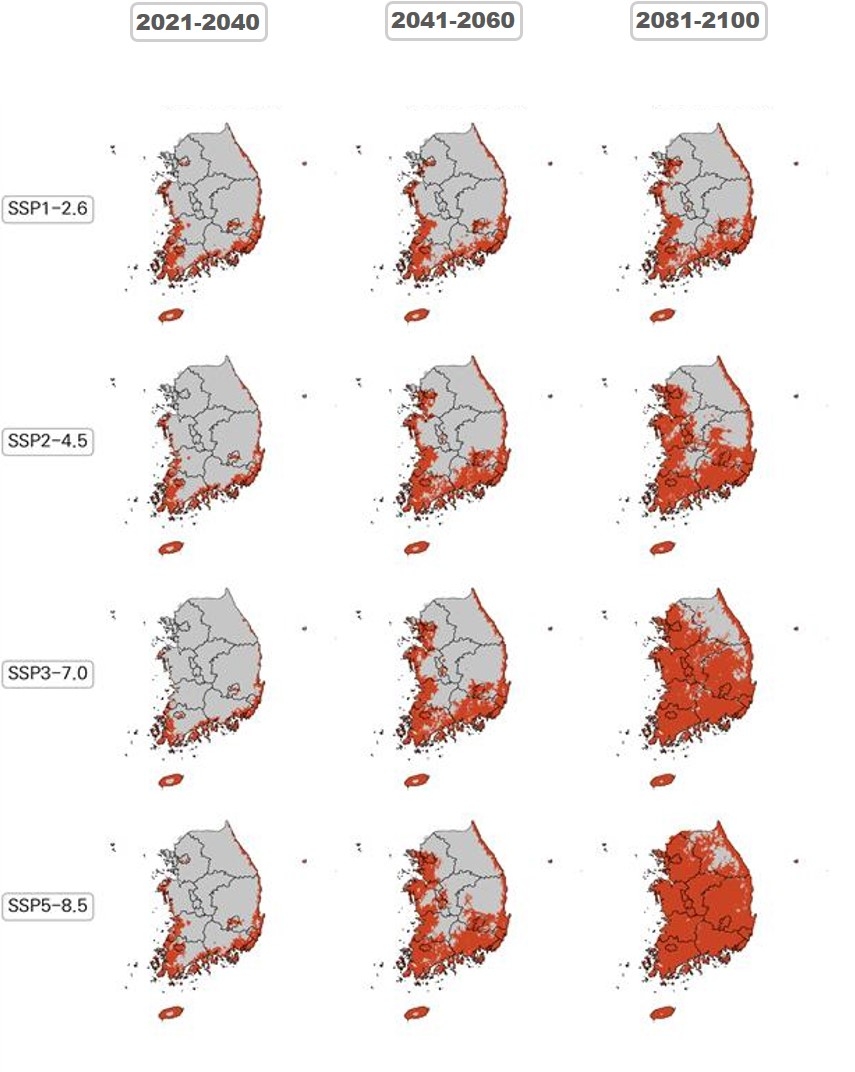
This chart, provided by Choi Young-eun, illustrates how subtropical climate zones could expand across South Korea under different mission scenarios. CHART: CONTRIBUTED/THE KOREA HERALD
If emissions remain high, Seoul could see up to 109 annual heat wave days by the end of the century, a sharp rise from 33 days in 2023.
Korea’s temperature to rise in every scenario
Kim said Korea is “already” displaying subtropical characteristics, pointing to the unusually long summer last year, which extended into November.
Climate classification systems vary, but the Trewartha climate classification, widely used in recent years, defines a subtropical climate as one where the monthly average temperature exceeds 10 degrees Celsius for more than eight months of the year. In Korea, average temperatures surpass this threshold from April to October, making November the deciding factor. In 2024, November’s average temperature was 9.7 degrees — just below the threshold.
According to the “2020 Korean Peninsula Climate Change Outlook Report” by the National Institute of Meteorological Sciences, further warming is expected under all future scenarios.
Between 2021 and 2040, Korea’s average temperature is projected to rise by 1.6 degrees Celsius under a low-emission scenario and by 1.8 degrees Celsius under a high-emission scenario. From 2041 to 2060, the projected increases are 1.8 degrees under the low-emission scenario and 3.3 degrees under the high-emission scenario.
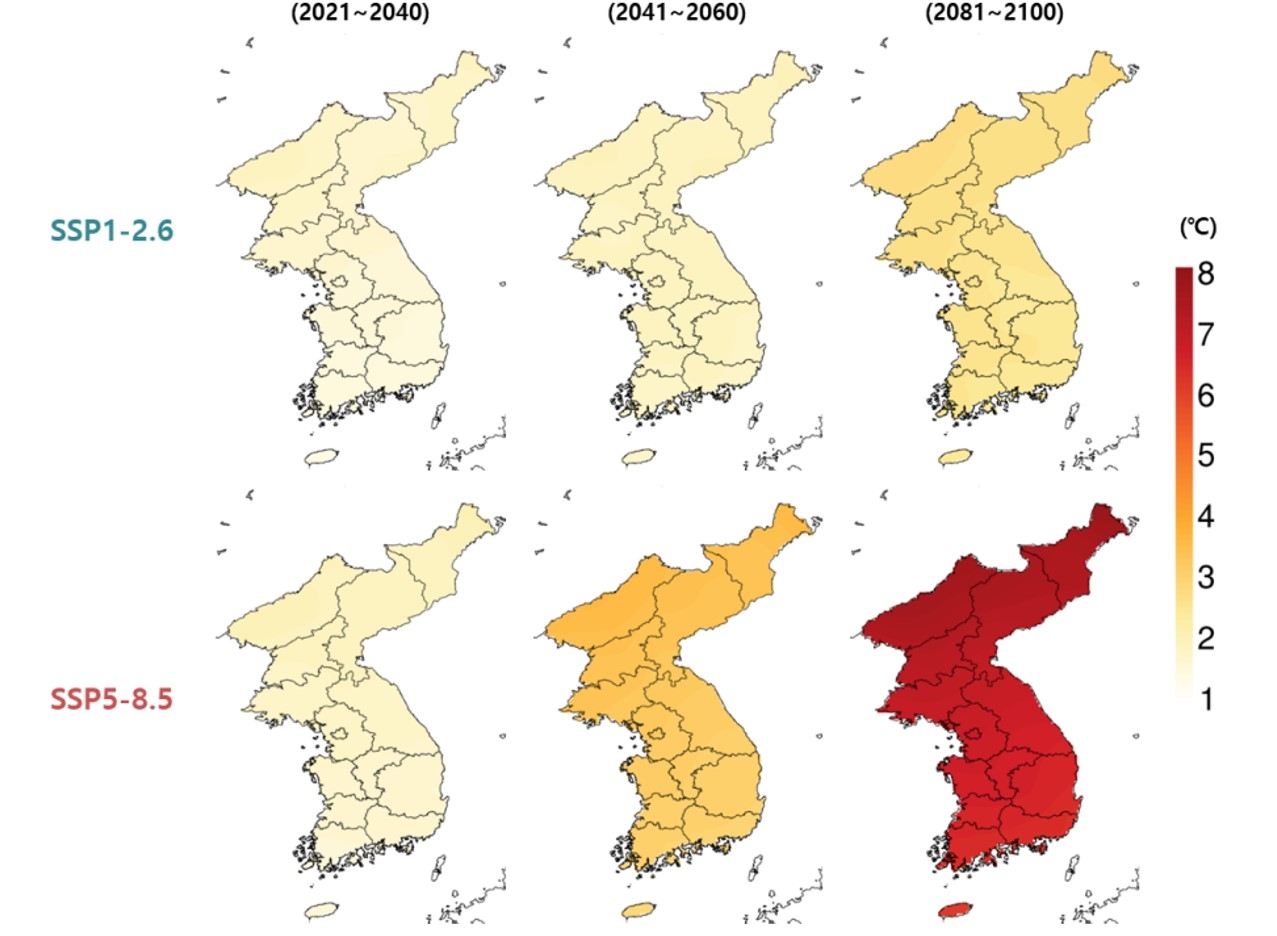
2020 Korean Peninsula Climate Change Outlook Report. CHART: COLLECTED//THE KOREA HERALD
As rising temperatures become inevitable, experts stress the importance of adaptation and mitigation strategies to reduce the impact of extreme heat.
“Understanding urban climate changes caused by global warming is crucial,” Choi said. “We need consistent, objective methods to assess maximum urban heat island intensity and develop effective countermeasures.”
With summers becoming longer and hotter, cities must prioritize sustainable urban planning, increase green spaces and implement heat mitigation strategies to protect vulnerable populations in the years ahead.


